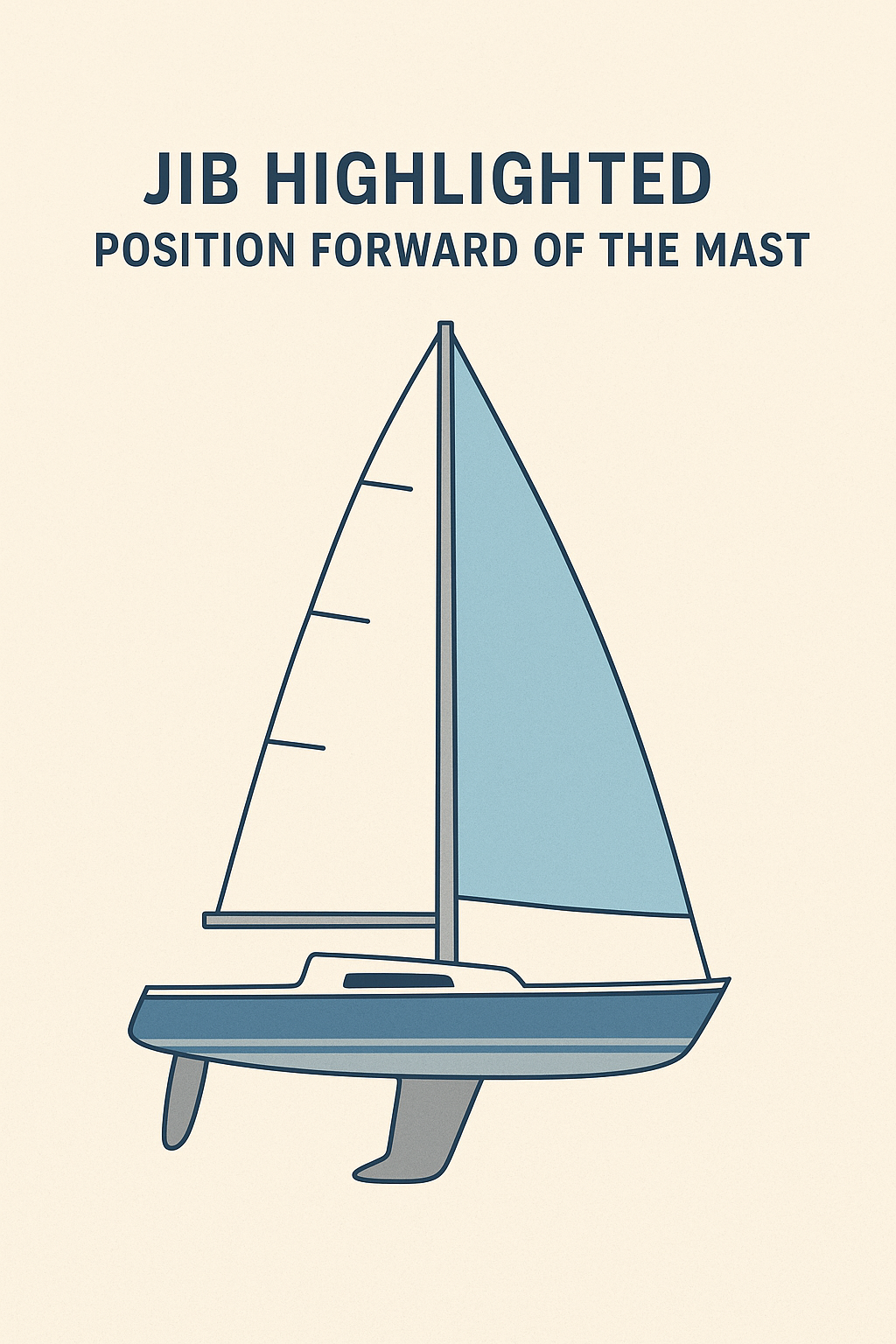Jib: A Triangular Sail Set Forward of the Mast
Definition: The jib is a triangular sail set forward of the mast on a sailboat. It is attached to the forestay, a wire that runs from the top of the mast to the bow, and it plays a crucial role in balancing the sail plan and improving the boat's performance, particularly when sailing upwind.
Understanding the Jib: In sailing, the jib is a key sail that works in conjunction with the mainsail to provide propulsion. The jib is smaller than the mainsail and is typically used to enhance the boat's
manoeuvrability
and speed. It helps to create an airflow that improves the efficiency of the mainsail, particularly when sailing close-hauled or on a reach. The jib can be adjusted or furled to suit different wind conditions, making it a versatile and essential component of the sail plan.
Types of Jibs:
Working Jib: A smaller, more manageable jib used in moderate to heavy wind conditions. It is often the standard jib used for everyday sailing.
Genoa: A larger jib that overlaps the mainsail, providing extra power in light wind conditions. It is most effective on a reach or when sailing close-hauled.
Storm Jib: A very small, sturdy jib used in heavy weather to maintain control and reduce the sail area.
Applications in Sailing:
Upwind Sailing: The jib is particularly effective when sailing upwind, helping the boat point closer to the wind and maintain speed.
Manoeuvrability: The jib enhances the boat's
manoeuvrability, making tacking and gybing more efficient.
Performance: The jib's contribution to the sail plan helps balance the boat and optimize performance in various wind conditions.
Examples of Usage:
"Trim the jib to optimize our speed on this upwind leg."
"We’ll need to furl the jib as the wind picks up to reduce sail area."
"The jib helps us maintain control and balance, especially when sailing close-hauled."
Visual Representation:
Image Description: Diagram of a sailboat with the jib highlighted, showing its position forward of the mast and attachment to the forestay.
Importance in Sailing: The jib is a fundamental sail on most sailboats, essential for upwind sailing and overall balance. Proper trimming and handling of the jib can significantly improve a boat's performance, making it an important sail for both cruising and racing sailors.
Related Terms:
Mainsail: The primary sail attached to the mast and boom.
Forestay: The wire or rod that runs from the top of the mast to the bow, providing forward support for the mast and holding the jib.
Genoa: A large headsail that overlaps the mainsail, used for light wind conditions.
Tack: The manoeuvre of changing direction by turning the bow through the wind.
Conclusion: The jib is an essential sail that plays a crucial role in a boat's sail plan, particularly when sailing upwind. Understanding how to trim and adjust the jib effectively can enhance a sailor's ability to navigate efficiently and maintain control in various wind conditions. Mastery of the jib is key to optimizing a sailboat's performance and handling.
